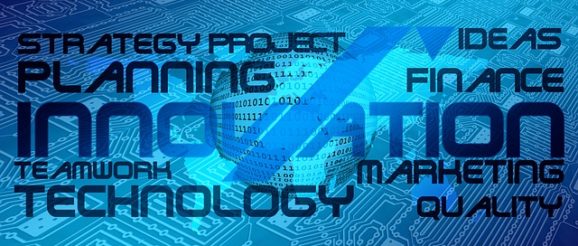Sustaining Imagination is Hard | Human-Centered Change and Innovation

Recently I stumbled across a new Royal Institute video of Martin Reeves, a managing director and senior partner in BCG’s San Francisco office. Martin leads the BCG Henderson Institute, BCG’s vehicle for exploring ideas from beyond the world of business, which have implications for business strategy management.
I previously interviewed Martin along with his co-author Dr. Jack Fuller in a post titled ‘Building an Imagination Machine‘. In this video you’ll find him presenting content along similar themes. I think you’ll enjoy it:
Bonus points to anyone who can name this napkin sketch in the comments.
In the video Martin explores several of the frameworks introduced in his book The Imagination Machine. One of the central tenets of Martin’s video is the fact that sustaining imagination is hard. There are three core reasons why this is so:
I do like the notion Martin presents that companies wishing to be continuously successful, continuously seek to be surprised and invest energy in rethinking, exploring and probing in areas where they find themselves surprised.
Martin also explores some of the common misconceptions about imagination, including the ideas that imagination is:
And finally, Martin puts forward his ideas on how imagination can be harnessed systematically, using a simple six-step model:
And no speech in 2023 would be complete without some analysis of what role artificial intelligence (AI) has to play. Martin’s perspective is that when it comes to the different levels of cognition, AI might be good at finding patterns of correlation, but humans have more advanced capabilities than machines when it comes to finding causation and counterfactual opportunities. There is an opportunity for all of us to think about how we can leverage AI across the six steps in the model above to accelerate or enhance our human efforts.
To close, Martin highlighted that when it comes to leading re-imagination, it is important to look outward, to self-disrupt, to establish heroic goals, utilize multiple mental models, and foster playfulness and experimentation across the organization to help keep imagination alive.
p.s. If you’re committed to learning the art and science of getting to the future first, then be sure and subscribe to my newsletter to make sure you’re one of the first to get certified in the FutureHacking™ methodology.
Image credits: Netflix
![]() Sign up here to join 17,000+ leaders getting Human-Centered Change & Innovation Weekly delivered to their inbox every week.
Sign up here to join 17,000+ leaders getting Human-Centered Change & Innovation Weekly delivered to their inbox every week.
